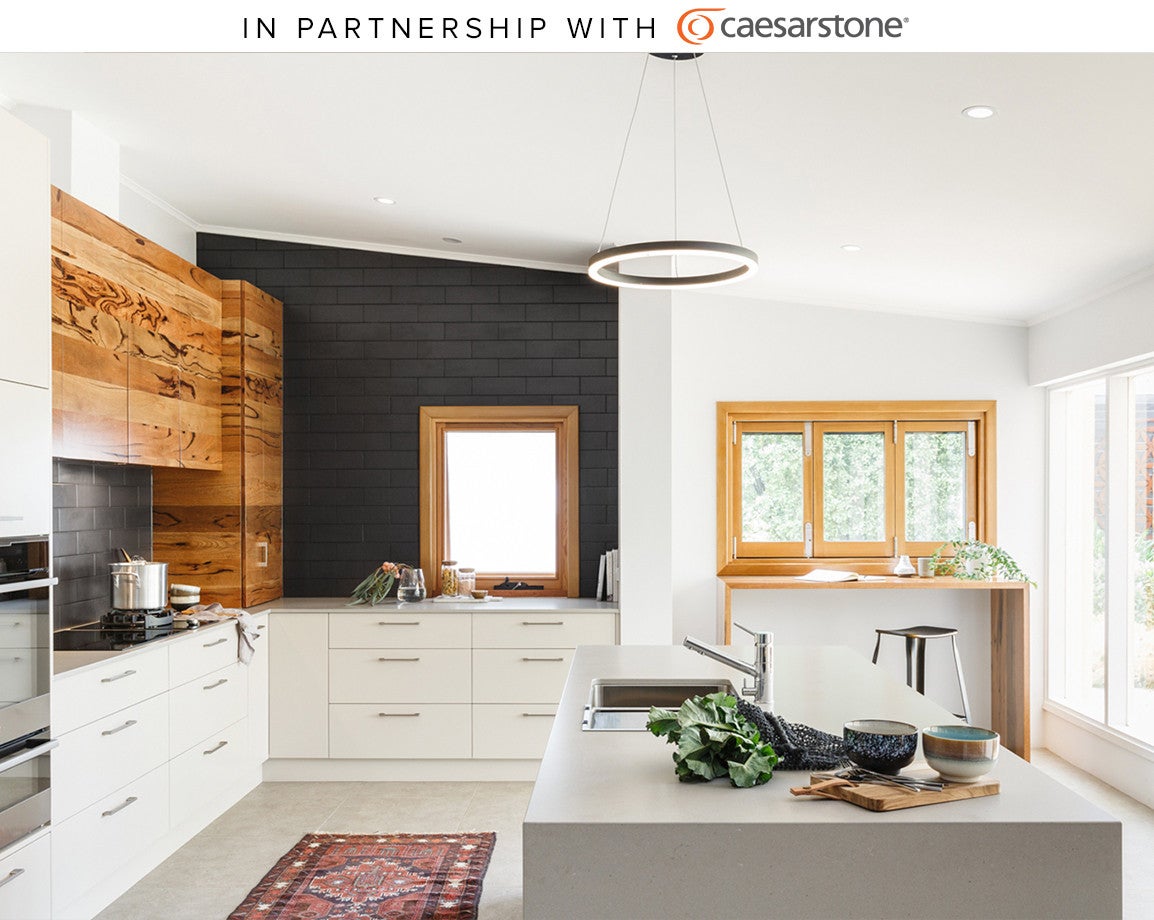Your Guide to Designing a Kitchen Using Concrete Quartz Countertops
An expert explains how to create your ideal space with the hot-right-now material
Published Aug 11, 2017 5:00 AM
We may earn revenue from the products available on this page and participate in affiliate programs.
The kitchen is arguably one of the most complex rooms in a house to design. From deciding on what the overall style should be to choosing the right materials, it’s a process. That’s why having a starting point is essential. One of the smartest ways to go? Deciding on what kind of countertops you want ahead of time.
“I think of kitchens as the heart of the home, and the counters are the center of that,” explains Claire Zinnecker, owner and lead designer of Claire Zinnecker Design. “Because of this, counters must be durable and easy to maintain in order to hold up to all sorts of life.” Additionally, whatever material you use should be within your budget and compatible with the look you’re trying to achieve. “The challenge is checking all of these boxes and discovering the best material for your lifestyle and design aesthetic,” she says. Here, find out why
concrete quartzmight be the right option for you, plus how to create your ideal kitchen using the material.
Why Concrete Quartz?
“Concrete quartz is a great choice for a counter for multiple reasons—especially Caesarstone’s rugged concrete,” Zinnecker says. ”Its organic appearance gives it the feel of a natural concrete but because it’s engineered, it has all the durability of a quartz counter. It works for anyone wanting to achieve the natural look without the drawbacks of using a natural material.” If you’re wondering what makes this material so much more convenient than regular old concrete, the answer is simple: “Concrete quartz is more resistant to damage than natural concrete because it is engineered and won’t absorb liquids or stains the way concrete will,” Zinnecker says. “It also will not require the maintenance of sealing. Wine, limes, and more—all will easily wipe away from this product.”
Pick Your Aesthetic
Another great aspect of using a kitchen material with a concrete look is that it’s incredibly versatile. “Concrete quartz works just as well in a rustic country cabin with traditional painted Shaker style cabinets as it does in a modern loft with sleek flat-front cabinets,” Zinnecker says. “Its organic quality and textural appearance allow it to complement kitchens of all styles.” All you have to do is decide what kind of aesthetic you want to commit to. Whether you want to go for farmhouse chic or do something more Scandinavian-inspired, you can customize your concrete-look counters to fit your style.
Choose Your Hue
Selecting a color isn’t always easy, but Zinnecker says looking at the big picture can help. “You need to think about the overall scheme of the kitchen and home when choosing your color: bright vs. neutral, rustic vs. modern, etc.” Once you’ve figured out what aesthetic you’re going for, there’s one thing you must do, according to Zinnecker: “Get a sample made!” That way, you can be absolutely sure you love your choice before taking the plunge. “Concrete quartz comes in a few different colorways and seeing them in person with the rest of the color and material palette in your kitchen is a must.”
Plus, she notes that one of the best things about engineered countertops is that the color won’t wear away or change over time the way it would with natural materials. “But keep in mind that the color will also not always be uniform throughout the counter, giving it an organic appearance,” she adds.
Fill Out The Space
Once your counters are squared away, the real fun starts. “Concrete-look counters go with so many other materials,” Zinnecker says. That means you can mix and match freely, incorporating any other materials you think will add to the design. For starters, “If you want the counter to appear more minimal, you can go with a simple white tile backsplash,” she suggests. “If you want it to feel more sophisticated, do a modern tile and a fun Schluter edge. If you want a pop, add a patterned cement tile to bring in some color.” Essentially, the sky’s the limit when it comes to what you can pair with the stuff. “Since concrete quartz has such a natural look, there are very few other materials it doesn’t work with. Marble, butcher block, shiplap—bring in any of these textures and it will only make the concrete quartz counter better.” As for her advice on how to choose other items in your kitchen like lighting fixtures, cabinetry, and appliances, Zinnecker says “you need to make sure you stay focused on the aesthetic you want in the space. If you are going for the sleek style, then perhaps you choose stainless steel, clean-lined pieces. If you want the more traditional look, bring in some painted cabinets, colors, and warm woods. If you want a bit of edge, then do a hit of color on the cabinets and brass fixtures.”
Let Your Countertops Shine
More than anything, Zinnecker’s expertise in decorating with concrete quartz has led her to the conclusion that sometimes, less is more. “Don’t over-design the space to balance out the natural feel of the countertop,” she says. You want to keep things intentional. “Add a pop, but don’t add too many. You want your eye to be able to rest in a space and not be overwhelmed with too many design ‘moments.’” That way, you can sit back, relax, and enjoy your well-designed kitchen.
Find out which concrete quartz countertop is right for you at CaesarstoneUS.com.
